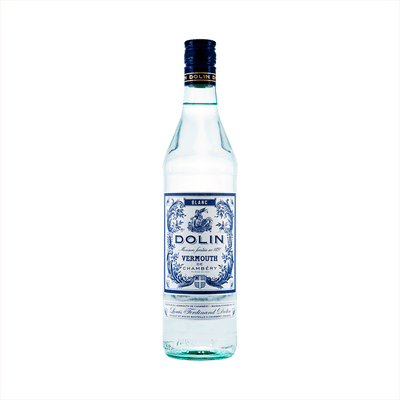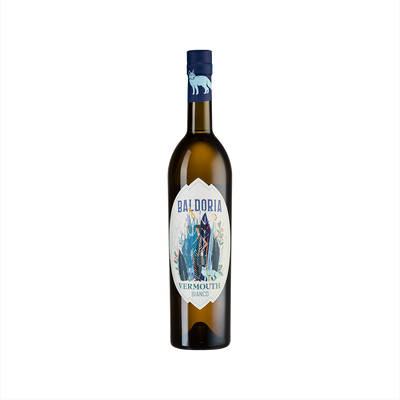Bianco Vermouth
What is Bianco Vermouth?
Bianco vermouth is a sweet style of vermouth that strikes a beautiful middle ground between red and dry varieties, offering gentle sweetness without the heavy botanical intensity of its darker cousin. This pale golden spirit gets its distinctive character from white wine as its base, infused with a lighter touch of herbs and spices that create a more delicate flavor profile. What defines bianco vermouth is its approachable sweetness balanced by bright acidity and subtle vanilla notes, making it incredibly versatile for both sipping neat and mixing in cocktails where you want sweetness without overwhelming complexity.
Learn More About Bianco Vermouth
What makes Bianco Vermouth unique?
Bianco vermouth sits in the sweet spot between dry and sweet styles, offering a gentler botanical profile with prominent vanilla and citrus notes that make it incredibly versatile for both sipping and mixing. Unlike the aggressive herbal punch of red vermouth or the austere dryness of white vermouth, bianco strikes a balanced middle ground with subtle sweetness and floral aromatics that complement rather than compete with other ingredients. This approachable character allows bartenders to use it in cocktails where you want vermouth's complexity without overwhelming delicate spirits like gin or vodka.
How is Bianco Vermouth made?
Bianco vermouth starts with a neutral white wine base that gets fortified with grape spirit to bump up the alcohol content. Producers then infuse this fortified wine with a secret blend of botanicals - typically including wormwood, vanilla, citrus peels, and various herbs and spices - through maceration or distillation methods. The mixture ages briefly before being filtered and sweetened with sugar or caramelized sugar to achieve that characteristic pale golden color and balanced sweet-bitter profile.
How do you drink Bianco Vermouth?
Bianco vermouth shines brightest when served chilled over ice with a twist of lemon or orange peel as an aperitif, though it's also delightful neat if you want to appreciate its botanical complexity. This versatile fortified wine finds its way into classic cocktails like the Americano, Negroni Bianco, and various spritzes, where its herbal sweetness and slight bitterness add depth without overwhelming other ingredients. Spring and summer afternoons call for bianco vermouth's refreshing qualities, making it perfect for leisurely outdoor gatherings or as a pre-dinner drink when you want something sophisticated but not too heavy.
How do I choose a good Bianco Vermouth?
When selecting a bianco vermouth, consider how much botanical complexity you want—some lean bright and citrusy while others bring herbal depth with chamomile, elderflower, or vanilla notes. Your cocktail choice should guide your decision: reach for a cleaner, more neutral bianco like Dolin Blanc for spirit-forward drinks where you want subtle enhancement, but choose something with more personality like Carpano Bianco or Contratto Bianco when the vermouth needs to hold its own in lighter, vermouth-forward cocktails. Taste a few different styles neat first to understand their individual character, since bianco vermouths can vary dramatically in sweetness levels and botanical profiles despite sharing that golden-white color.
Nutritional Information
Typical Calorie Range per Ounce: 35-45 calories
Typical Carbohydrate Range per Ounce: 3-5 grams
Typical Sugar Range per Ounce: 2-4 grams
Typically Gluten Free: Yes
Most bianco vermouths are made from wine and botanicals without gluten-containing ingredients. While the wine base is naturally gluten-free and the botanical infusions typically don't include grains, production methods can vary between producers. Always check the specific product label and manufacturer information to confirm gluten-free status, especially if you have celiac disease or severe gluten sensitivity.
Scrolled this far? Your reward? Bianco Vermouth Trivia!
- Bianco vermouth was actually invented as a "compromise" drink in 1910 by Luigi Rossi at Martini & Rossi because Italian women found red vermouth too bitter and white vermouth too dry. The sweet, vanilla-kissed style became an instant hit at aperitivo hour and remains the most popular vermouth style in Italy today.
- The signature vanilla flavor in bianco vermouth doesn't come from vanilla beans at all – it comes from elderflower blossoms and sweet woodruff, two botanicals that naturally produce vanillin compounds when macerated in wine. This botanical "trick" gives bianco its creamy sweetness without any actual vanilla.
- Bianco vermouth was the original base for the Negroni Sbagliato, which translates to "mistaken Negroni." The drink was created in the 1970s when a Milan bartender accidentally grabbed bianco vermouth instead of gin, then added Prosecco to cover his tracks. The "mistake" became more popular than the original Negroni in northern Italy.
- Unlike other vermouths that use neutral grape wines as their base, premium bianco vermouths often start with Moscato d'Asti or other aromatic wines, which explains why they smell almost perfumed when you first open the bottle. This wine choice adds layers of floral complexity that complement the botanical infusions.
- Bianco vermouth contains roughly the same amount of sugar as Coca-Cola (about 150 grams per liter), but tastes far less sweet because the bitter botanicals like wormwood and gentian root create a flavor masking effect on your taste buds. This is why you can sip it neat without feeling like you're drinking liquid candy.
Higher-proof spirits can be intense. Mix carefully, taste thoughtfully, and enjoy responsibly.
Gift message (optional)



